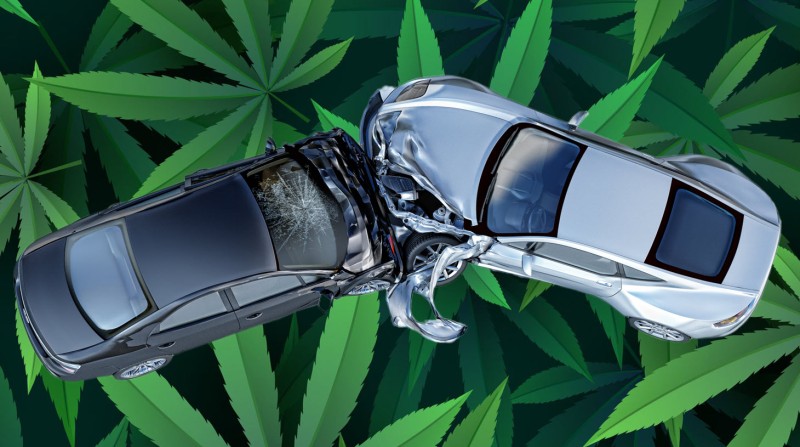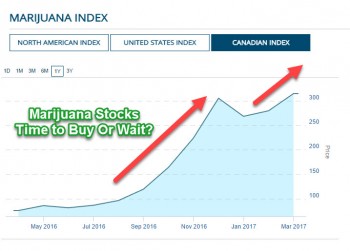
According to a recent Quartz Advisor report titled "Legalizing Marijuana Hasn't Improved Road Safety," data reveals a decline in traffic fatalities in four states that legalized adult-use cannabis since 2016. In contrast, there was a slight increase in fatalities in five states where cannabis remains illegal.
Nevertheless, the report also highlighted some anomalies, notably a slight rise in traffic fatalities nationwide during the pandemic years 2020 and 2021.
This report by Quartz Advisor was published on October 24, and it emphasized three key findings:
-
In California, Maine, Massachusetts, and Nevada, which fully legalized marijuana in 2016, traffic fatalities either decreased or remained stable over the subsequent three years. In contrast, states where marijuana remained illegal experienced a slight uptick in traffic fatalities.
-
A comprehensive analysis of traffic data in both the United States and Canada failed to identify a statistically significant change in accident rates and fatalities following cannabis legalization.
-
Notably, alcohol, which remains legal in all 50 U.S. states and Washington D.C., is a contributing factor in nearly one-third of all automotive fatalities.
Details of the Study
Quartz enhanced data accuracy by utilizing traffic fatality statistics from the National Safety Council (NSC), which they believed offered more precise results. In the report summary, Senior Automotive Journalist David Straughan detailed their approach. He stated that for the sake of clarity and consistency, they selected four states – California, Maine, Massachusetts, and Nevada – that fully legalized marijuana in 2016 as the focus for their examination of vehicle fatality rate trends.
Their primary metric was deaths per 100,000,000 vehicle miles, sourced from the National Safety Council (NSC). Their team analyzed individual vehicle fatality and aggregated fatality rates in these four states for the years following 2016, comparing them to the U.S. national average.
Furthermore, they compared data from five states – Idaho, Indiana, Kansas, Nebraska, and Wyoming – where marijuana has not been legalized. Overall. At the same time, the vehicle death rate increased universally during the pandemic years, and the states that hadn't legalized adult-use cannabis experienced a "slight increase" in fatalities.
In the states that embraced marijuana legalization in 2016, the vehicle fatality rate rose by 6.0% between 2016 and 2021. Although this marked an increase, it was marginally below the national average, which saw a 6.2% uptick in the traffic fatality rate during the same period. In contrast, the five states that refrained from legalizing cannabis within that timeframe witnessed an average decrease of 0.7% in their vehicle death rate.
Recognizing the complexity and nuances of the situation, researchers at Quartz Advisor decided to exclude the traffic fatality data for 2020 and 2021 to gain a clearer perspective.
In many respects, 2020 and 2021 stood out as anomalies, particularly when examining trends in vehicular accidents. After decades of declining accident rates in the U.S., traffic fatalities surged in 2020 and remained elevated through 2021. The United States as a whole witnessed an 18.9% spike in traffic fatality rates from 2019 to 2021.
States that legalized marijuana in 2016 experienced a similar increase of 19.9%. Conversely, states that had not legalized marijuana, often characterized by their more rural nature, saw the vehicular death rate decrease by 2.3% over that same period.
A research article featured in The American Journal of Addictions (AJA) highlighted the impact of cannabis on driving ability and discouraged its use in this context. However, it revealed intriguing findings.
The article states that, surprisingly, despite cognitive study results, the majority of drivers under the influence of marijuana exhibit only minor impairments in actual road tests. Furthermore, the report notes, "Experienced cannabis users navigating a predefined course demonstrate minimal functional impairment while under the influence of marijuana."
Americans Drive While Impaired by Marijuana
In December 2019, High Times reported that a significant number of Americans were using marijuana and then operating vehicles.
In 2019, researchers associated with the Centers for Disease Control and Prevention's Morbidity and Mortality Weekly Report unveiled a study's findings. These findings disclosed that in 2018, 12 million American adults openly admitted to driving while under the influence of marijuana.
The report, titled "Driving Under the Influence of Marijuana and Illicit Drugs Among Individuals Aged ≥16 Years — United States, 2018," was officially published on December 20, 2019.
Furthermore, the CDC also emphasized that in 2018, around 10,511 fatalities were linked to driving under the influence of alcohol. These revelations concerning impaired driving due to marijuana were in line with a previous report released by the American Automobile Association (AAA) several years earlier.
According to the AAA report, nearly 70% of Americans hold the belief that it is improbable for a driver to face law enforcement consequences when driving under the influence of marijuana. The report also highlighted what it termed as another "disturbing discovery" in its research: approximately 14.8 million drivers had driven within an hour of marijuana use in the past 30 days.
In the subsequent two years after the release of that report, there was a widespread increase in traffic fatalities due to the impact of COVID-19 and the ensuing lockdowns.
Conclusion
The reports and research findings discussed emphasize the intersection of marijuana use and driving. The data reveals a significant number of Americans admitting to driving under the influence of cannabis, raising questions about road safety.
Although specific studies indicate that experienced cannabis users might display only minor impairments, it is crucial to assess the broader consequences of such behavior. This is particularly in light of the surge in traffic fatalities during the pandemic.
The alarming statistic that 14.8 million drivers have recently driven within an hour of using marijuana underscores the urgency of addressing this issue. Maintaining road safety is of utmost importance, requiring a multifaceted approach encompassing public education, robust regulation, and the enactment of suitable legal protections.
Striking a harmonious balance between individual liberties and the well-being of society is crucial to mitigating the potential hazards linked to driving while under the influence of cannabis.
This situation underscores the importance of ongoing research, raising awareness, and implementing measures to promote responsible and safe driving practices, with a specific focus on cannabis use.







